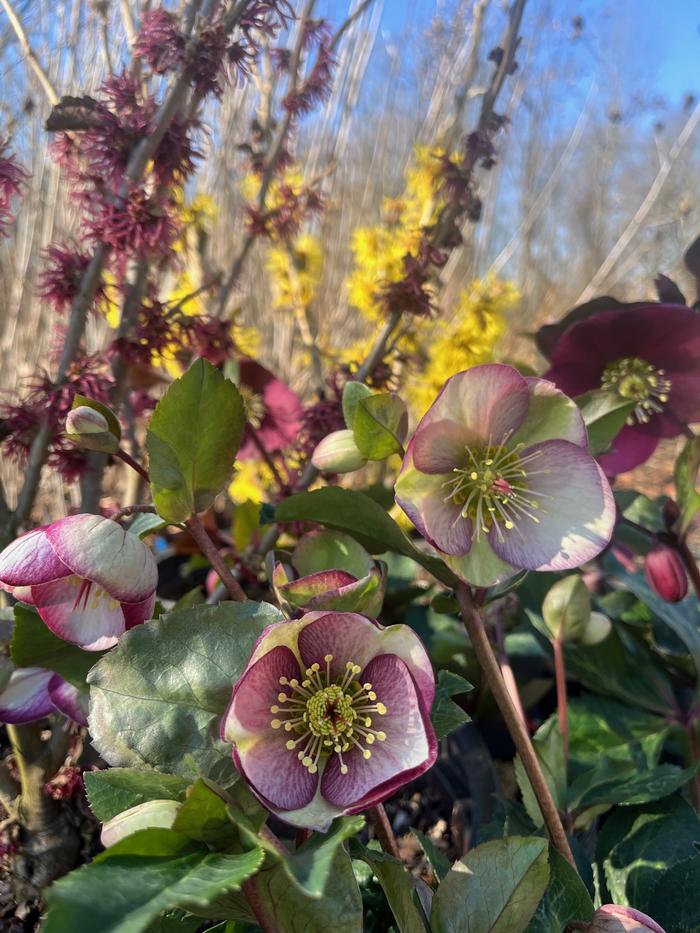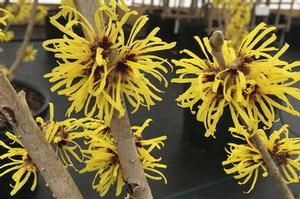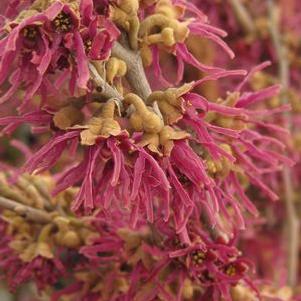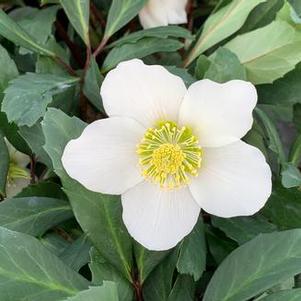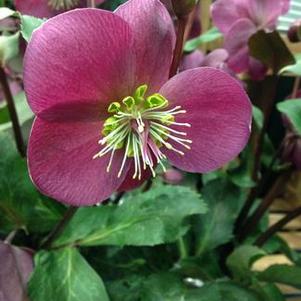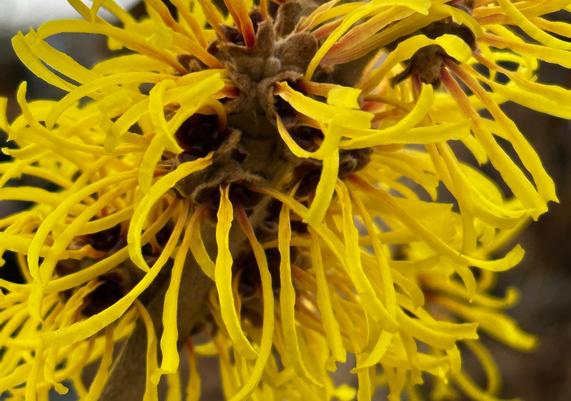The History of Hellebores & Hamamelis
While we continue to trudge through what’s left of “winter” (loosely termed here due to the lack of, well, wintry weather), we’d like to fill your inbox with the pops of color and growth that pepper the nursery throughout the remaining dreary, grey months. While you’re likely not planting much right now, here’s some food for thought (plants for thought?) going into Spring 2023 – this week, we’re taking a look at the historical angle of two genus’ known for their ornamental uses in both the past as well as modernity.
It’s no secret that many of the ornamental plants we seek out and carefully arrange in our gardens and landscape have storied pasts, often stemming from medicinal and folkloric traditions. While Western society has largely removed herbal medicine from its primary pharmaceutical repertoire, many of the plants we know and love today have either received their names (both common and scientific) from their medicinal constituents, or from their folkloric and often magical qualities that were thought to be influential, if not critical, in both secular and holy rites.
A staple in the winter landscape where dry, moderate shade dominates, the evergreen perennial Helleborus offers a multitude of hybridized species varieties with striking blooms during late winter. While the last decade has seen an upswing of interesting hellebore varieties, this genus has been a topic of botanical conversation as far back as the Ancient Greeks and Romans, noted by both historical botanists Dioscorides and Pliny the Elder for its toxic and potentially deadly effects. Helleborus orientalis specifically gets its name from the Greek derived “helleboros”, meaning literally “to injure” and “food”, implying the presence of phytotoxins. 1 Similarly, Helleborus niger is known to produce glycosides in its roots which can negatively impact cardiac processes if ingested. All hellebores produce protoanemonin, a toxin found in all plants of the buttercup family, Ranunculaceae. Side effects following ingestion of plants heavy in protoanemonin range from skin irritation and nausea to dizziness and vomiting, as well as spasms and paralysis in high doses.
It’s important to note here that one would benefit from wearing gloves when trimming, cutting, or working with hellebores at all in the garden due to the potential for contact dermatitis, in the event that the sap of the plant interacts with exposed skin.2 Note also that hellebores also benefit from some wind protection in the winter, by way of higher branching trees and shrubs.
Equally as recognizable in the winter landscape for its unique sets of blooms that make it a welcomed late-season source of nectar for pollinators is the genus of plants known commonly as witch-hazel: Hamamelis. Known to be one of the earliest prized New World ornamentals, Europeans discovered and heartily cultivated witch-hazel as an attractive fall and winter-blooming shrub, with private collections dating as far back as the early 17th century. Contrary to what the common name might imply, the term witch-hazel is actually derived from the Old English word wych, which directly refers to the pliability of the plant’s branches and is also the derivative of the word “wicker” (Anzelone 2005). The genus is comprised of four independent species, two from North America (H. virginiana and H. vernalis) and two from Asia (H. mollis and H. japonica). Most famously, a decoction of the twigs, branches, and bark of the North American Hamamelis virginiana is known for being distilled as a tonic water for cosmetic and medicinal use. Used by First Nations tribes such as the Cherokee and Iroquois for its ability to treat various skin ailments both as a decoction as well as salve, this method has been preserved as both a modern preparation and remedy for cuts, scrapes, bruises, inflammations, and other disparities of the skin (Nickel 2013). The world’s largest witch-hazel distillery still exists today in East Hampton, Connecticut, sourcing from wild-harvested witch-hazel through New England (Gapinski 2014).
In the landscape, Hamamelis varieties run the gambit of bloom times and colors, ranging from natural yellows to fiery reds, and oranges, purple-burgundy as seen in the ‘Amethyst’ cultivar, and ombré gradients featuring a multitude of the aforementioned hues.
- Jacoby, K. (2017, February 3). Hellebores: Fact and Folklore. Retrieved HelleborusJanuary 25, 2023, from https://s3.wp.wsu.edu/uploads/sites/2073/2014/03/Hellebores-Fact-Folklore.pdf
- Plumlee, K. H. (2004). Plants. Clinical Veterinary Toxicology, 337–442. https://doi.org/10.1016/b0-32-301125-x/50028-5
- Anzelone, M. (2005, September 9). Native witch-hazel. Brooklyn Botanic Garden. Retrieved January 25, 2023, from https://www.bbg.org/gardening/article/winsome_witch-hazel
- Nickel, E. (2013, August 8). Witch Hazel: Queen of winter. Pacific Horticulture. Retrieved January 25, 2023, from https://pacifichorticulture.org/articles/witch-hazel-queen-of-winter/
- Gapinski, A. (2014, October 15). Hamamelidaceae, part 1: Exploring the witch-hazels of the Arnold Arboretum. Hamamelidaceae, Part 1: Exploring the Witch-hazels of the Arnold Arboretum | Arnold Arboretum. Retrieved January 25, 2023, from https://arboretum.harvard.edu/stories/hamamelidaceae-part-1-exploring-the-witch-hazels-of-the-arnold-arboretum/
- Thompson, P. (2022, January 17). The World of Hellebores. Home & Garden Information Center | Clemson University, South Carolina. Retrieved January 25, 2023, from https://hgic.clemson.edu/the-world-of-hellebores/

